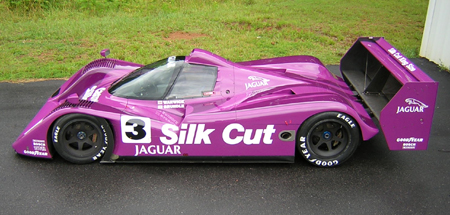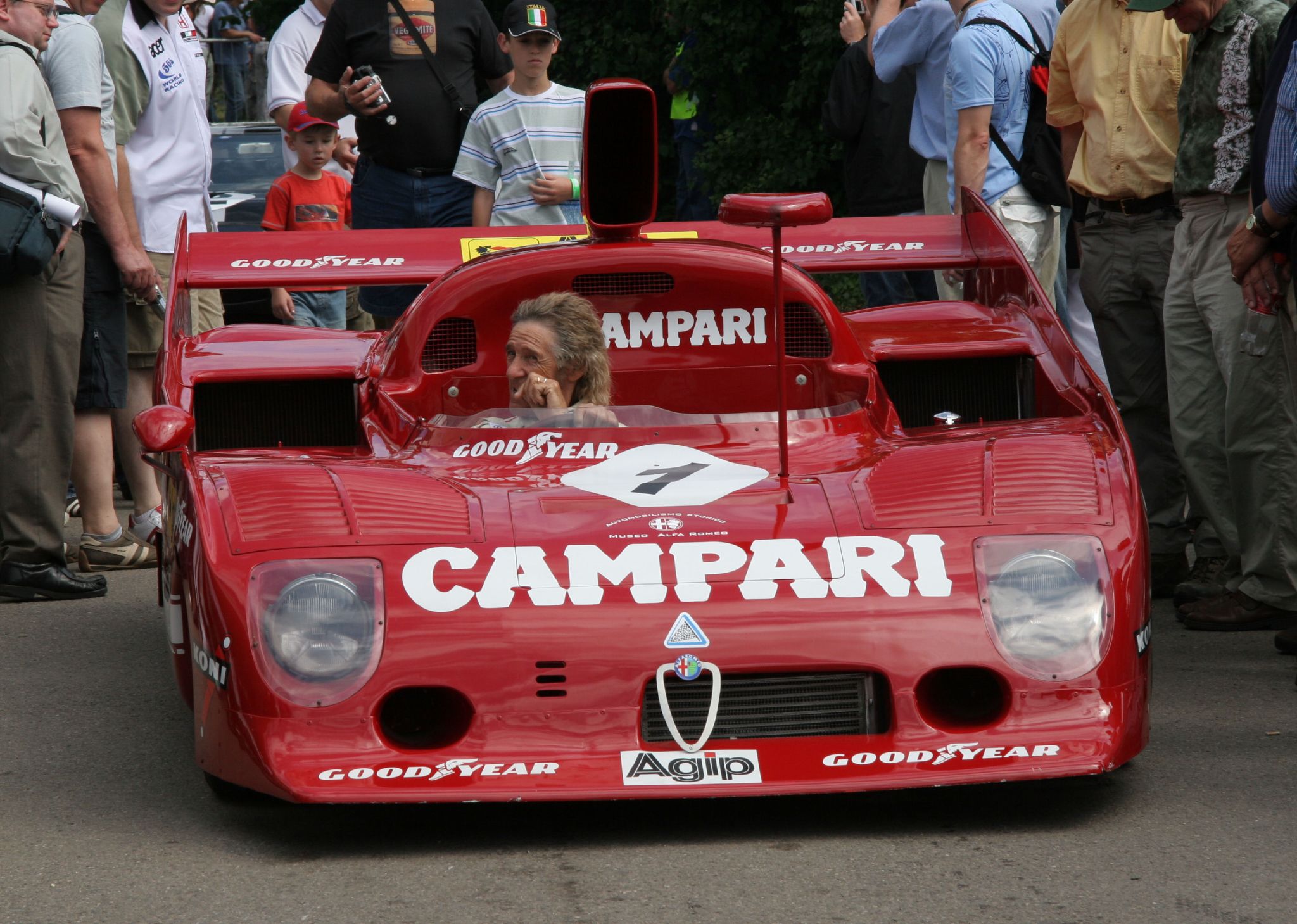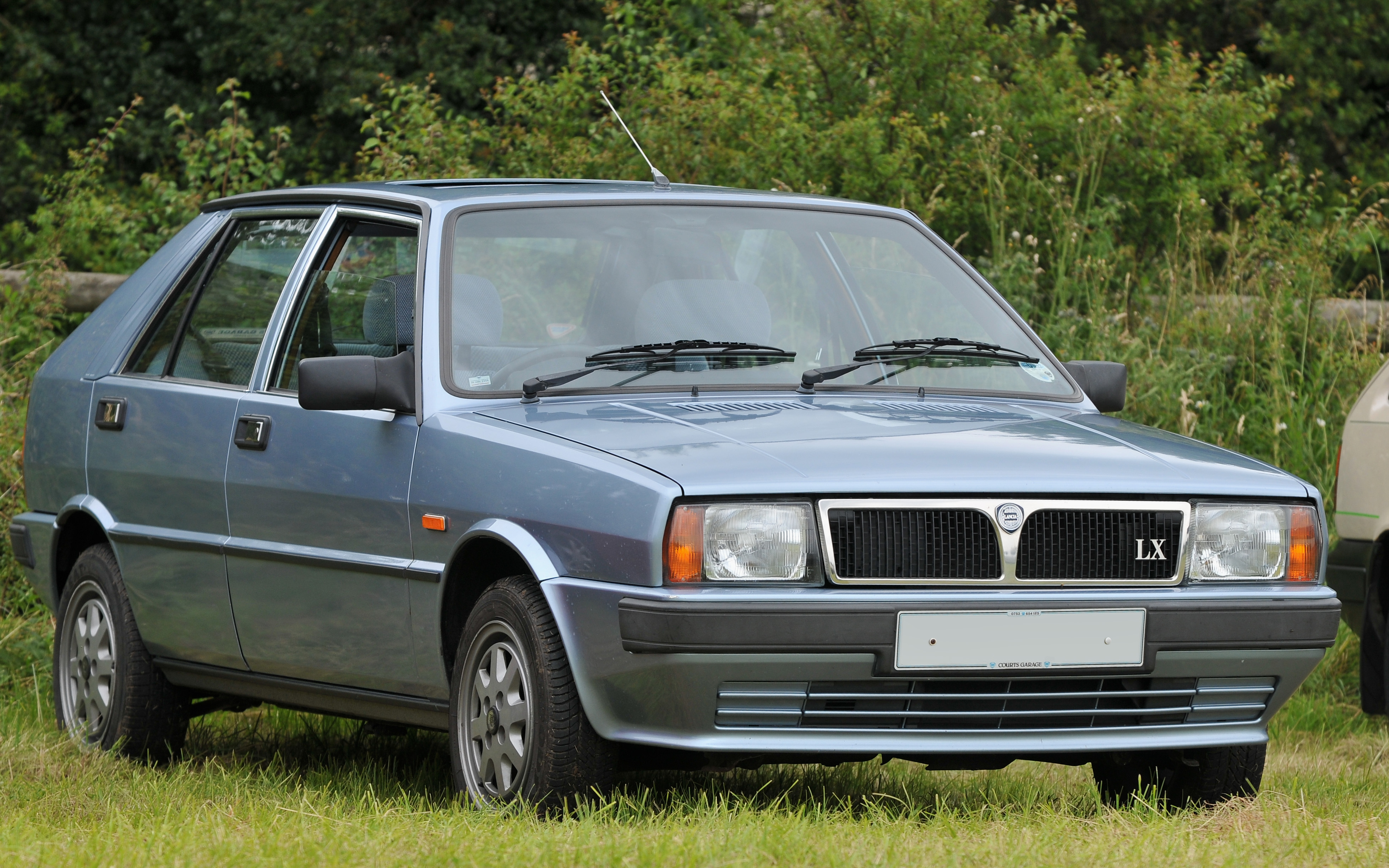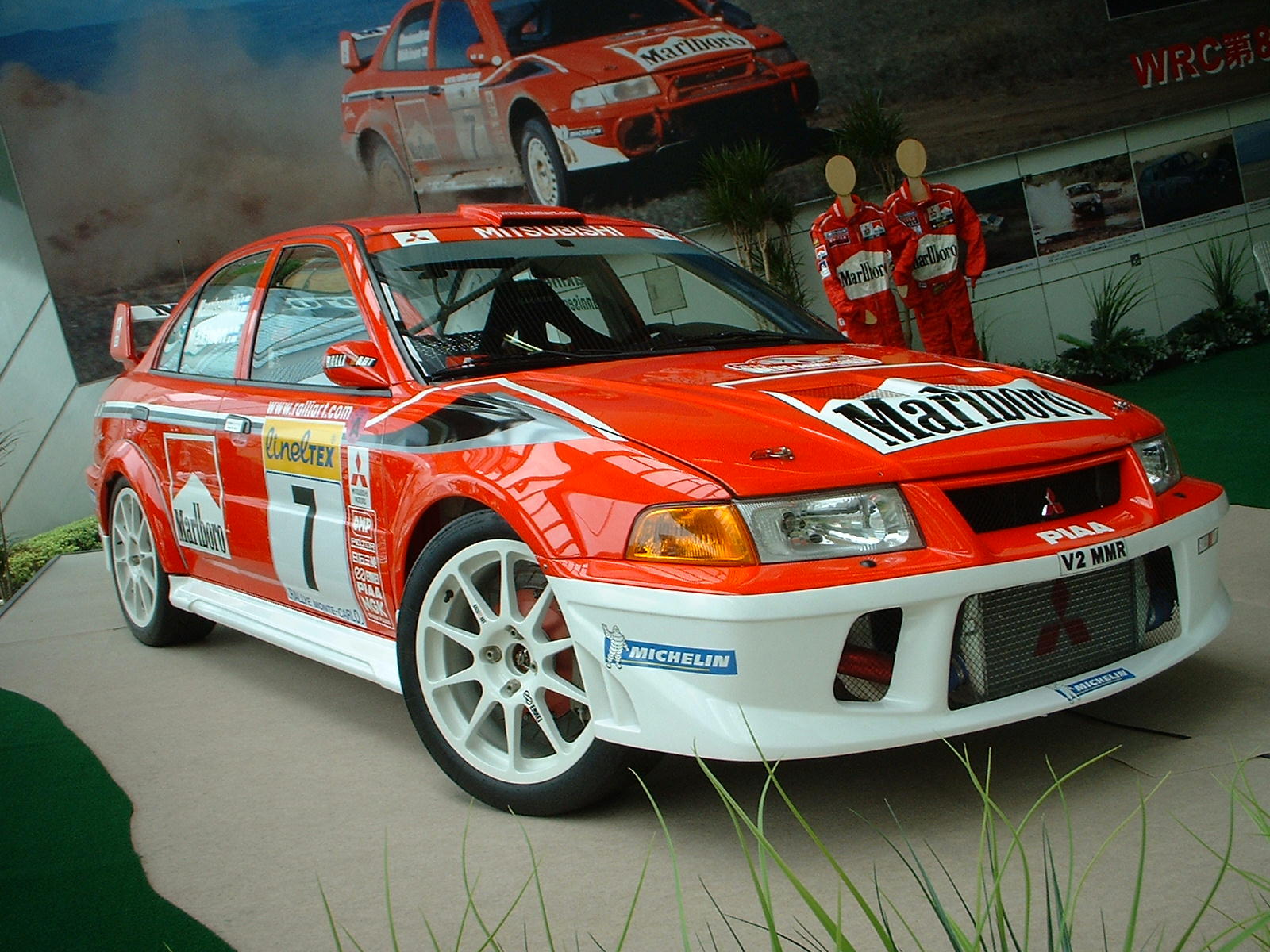|
Alfa Romeo SE 048SP
The Alfa Romeo SE 048SP was a Group C racing car built by Alfa Romeo in the early 1990s. Designed to replace the Lancia LC2 after the Group C regulations had undergone a major revamp, the SE 048SP had an Abarth-developed chassis mated to the 3.5-litre V10 engine from the stillborn Alfa Romeo 164 Procar, but, although at least one SE 048SP was built, it never left the development phase. The V10 engine appears to have been replaced by a Ferrari-sourced 3.5-litre V12 engine at some point during its development, although this was never officially confirmed by Alfa Romeo. Design and development In 1990, the Group C regulations underwent a major revamp, with the primary focus being on changing the engines to 3.5-litre units sourced from Formula One cars. The Fiat Group had previously run the Lancia LC2 in the Group C category, but had cancelled that project in 1986 after only winning one race with the LC2. In 1990, Lancia were primarily focusing on the World Rally Championship (with ... [...More Info...] [...Related Items...] OR: [Wikipedia] [Google] [Baidu] |
Alfa Romeo 164 Procar
The Alfa Romeo 164 (Type 164) is a four-door executive saloon manufactured and marketed by Italian automaker Alfa Romeo from 1987-1998, styled by Pininfarina, and cooperatively designed and sharing platforms and numerous elements with the Fiat Croma, Saab 9000 and Lancia Thema. The predecessors of the 164 were the Alfa 90 and the luxurious Alfa 6. The 164 was superseded by the 166 in 1998, after a combined production total of 273,857 units. Development In October 1978, Alfa Romeo, Fiat, Lancia and Saab jointly agreed to each develop an executive saloon based on their shared Type Four platform (''"Tipo 4"'' in Italian), to eventually compete against the likes of the Ford Granada and Opel Rekord (Vauxhall Carlton) as well as more premium saloons by BMW and Mercedes-Benz in the form of the 5 Series and E-Class, respectively. Project 164 started life as ''Project 156'' (not to be confused with Alfa Romeo 156) and was completed in 1981, then still under Alfa Romeo. A year later ... [...More Info...] [...Related Items...] OR: [Wikipedia] [Google] [Baidu] |
1991 World Sportscar Championship Season
The 1991 FIA Sportscar World Championship season was the 39th season of FIA World Sportscar Championship motor racing. It featured the 1991 FIA Sportscar World Championship, which was contested over an eight race series from 14 April to 28 October 28, 1991. The series was open to Group C Sportscars, with Category 1 cars complying with new 1991 Group C rules and Category 2 cars running under the pre 1991 regulations. Teo Fabi won the Drivers Championship and Silk Cut Jaguar won the Teams title. Schedule Entries Note: As Toyota Team Tom's was not a full-season SWC entrant, the team and drivers were not eligible for championship points. Results and standings Race results In order to be classified for points, a team had to complete 90% of the winner's distance. Further, drivers were required to complete at least 30% of their car's total race distance to qualify for championship points. Drivers forfeited points if they drove in more than one car during the race. Drivers ... [...More Info...] [...Related Items...] OR: [Wikipedia] [Google] [Baidu] |
Revolutions Per Minute
Revolutions per minute (abbreviated rpm, RPM, rev/min, r/min, or with the notation min−1) is a unit of rotational speed or rotational frequency for rotating machines. Standards ISO 80000-3:2019 defines a unit of rotation as the dimensionless unit equal to 1, which it refers to as a revolution, but does not define the revolution as a unit. It defines a unit of rotational frequency equal to s−1. The superseded standard ISO 80000-3:2006 did however state with reference to the unit name 'one', symbol '1', that "The special name revolution, symbol r, for this unit is widely used in specifications on rotating machines." The International System of Units (SI) does not recognize rpm as a unit, and defines the unit of frequency, Hz, as equal to s−1. :\begin 1~&\text &&=& 60~&\text \\ \frac~&\text &&=& 1~&\text \end A corresponding but distinct quantity for describing rotation is angular velocity, for which the SI unit is the ra ... [...More Info...] [...Related Items...] OR: [Wikipedia] [Google] [Baidu] |
Osella
Osella is an Italian racing car manufacturer and former Formula One team. They participated in 132 Grands Prix between 1980 and 1990. They achieved two points finishes and scored five championship points. Early days Named after its founder Vincenzo "Enzo" Osella, the team began life by racing Abarth sports cars among local and national races in Italy since 1965. Though relatively successful (Osella eventually took over the factory Abarth sports car program), Osella expanded into single-seater racing in 1974 to further develop his business. In 1975, the team entered the European Formula Two Championship for the first time, achieving some success with its own car, the BMW-powered Osella FA2. Osella continued in Formula Two in 1976, but financial problems meant that the team was not competitive and withdrew from the championship before the end of the season. In the following years, the FA2s were occasionally entered by privateers, one of them being the Swiss Charly Kiser. Lat ... [...More Info...] [...Related Items...] OR: [Wikipedia] [Google] [Baidu] |
Alfa Romeo Tipo 33
The Alfa Romeo Tipo 33 was a sports racing prototype raced by the Alfa Romeo factory-backed team between 1967 and 1977. These cars took part for Sport Cars World Championship, Nordic Challenge Cup, Interserie and CanAm series. A small number of road going cars were derived from it in 1967, called Alfa Romeo 33 Stradale. With the 33TT12 Alfa Romeo won the 1975 World Championship for Makes, and with the 33SC12 the 1977 World Championship for Sports Cars, taking the first place in all eight of the championship races. Alfa Romeo Tipo 33 Alfa Romeo started development of the Tipo 33 in the early 1960s, with the first car being built in 1965. It was sent to Autodelta to be completed and for additional changes to be made. It used a straight-4 engine from the Alfa Romeo TZ2, but Autodelta produced its 2.0 litre V8 soon after. The 2000 cc (122ci) Tipo 33 mid-engined prototype debuted on 12 March 1967 at the Belgian hillclimbing event at Fléron, with Teodoro Zeccoli winning. ... [...More Info...] [...Related Items...] OR: [Wikipedia] [Google] [Baidu] |
Sports Car Racing
Sports car racing is a form of motorsport road racing which utilises sports cars that have two seats and enclosed wheels. They may be purpose-built prototypes or grand tourers based on road-going models. Broadly speaking, sports car racing is one of the main types of circuit auto racing, alongside open-wheel single-seater racing (such as Formula One), touring car racing (such as the British Touring Car Championship, which is based on 'saloon cars' as opposed to the 'exotics' seen in sports cars) and stock car racing (such as NASCAR). Sports car races are often, though not always, endurance races that are run over relatively large distances, and there is usually a larger emphasis placed on the reliability and efficiency of the car as opposed to outright speed of the driver. The FIA World Endurance Championship is an example of a sports car racing series. A type of hybrid between the purism of open-wheelers and the familiarity of touring car racing, this style is often associate ... [...More Info...] [...Related Items...] OR: [Wikipedia] [Google] [Baidu] |
Lancia Delta Integrale
The Lancia Delta is a small family car produced by Italian automobile manufacturer Lancia in three generations. The first generation (1979-1994) debuted at the 1979 Frankfurt Motor Show, the second generation (1993-1999) debuted at the 1993 Geneva Motor Show, and the third generation (2008-2014) debuted at 2008 Geneva Motor Show. The first generation Delta dominated the World Rally Championship during the late 1980s and early 1990s. The homologation requirements of Group A regulations meant marketing road-going versions of these competition cars — the Lancia Delta HF 4WD and HF Integrale. A total of 44,296 Integrales were produced. First generation The first Delta (''Tipo 831'') was a five-door hatchback, designed by Giorgetto Giugiaro and released in 1979. Between 1980 and 1982, it was also sold in Sweden, Denmark and Norway by Saab Automobile, badged as the "Saab-Lancia 600" to replace the retired 96 model. The Delta was voted the 1980 European Car of the Year. A s ... [...More Info...] [...Related Items...] OR: [Wikipedia] [Google] [Baidu] |
Group A
Group A is a set of motorsport regulations administered by the FIA covering production derived vehicles intended for competition, usually in touring car racing and rallying. In contrast to the short-lived Group B and Group C, Group A vehicles were limited in terms of power, weight, allowed technology and overall cost. Group A was aimed at ensuring numerous entries in races of privately owned vehicles. Group A was introduced by the FIA in 1982 to replace the outgoing Group 2 as "modified touring cars", while Group N would replace Group 1 as "standard touring cars". During the early years there were no further formula for production based race cars. Cars from multiple Groups could contest the World Rally Championship for Manufacturers for example until 1997 when the specific World Rally Car formula was introduced as the only option. In recent years Groups A and N have begun to be phased out in eligibility in championships though they continue to form the homologation basis for mos ... [...More Info...] [...Related Items...] OR: [Wikipedia] [Google] [Baidu] |
World Rally Championship
The World Rally Championship (abbreviated as WRC) is the highest level of global competition in the motorsport discipline of rallying, owned and governed by the FIA. There are separate championships for drivers, co-drivers, manufacturers and teams. The series currently consists of 13 three to four-day rally events driven on surfaces ranging from gravel and tarmac to snow and ice. Each rally is usually split into 15–25 special stages which are run against the clock on up to 350 kilometres of closed roads. Drivers Sébastien Loeb, Sébastien Ogier, Juha Kankkunen, Tommi Mäkinen and Colin McRae all became WRC champions. Other drivers who became well known primarily through their WRC careers include Michèle Mouton, Henri Toivonen, Jari-Matti Latvala and Mikko Hirvonen. Rallies that have frequently appeared in the championship have included Monte Carlo Rally, Tour de Corse, Sanremo, Acropolis, Safari Rally, and national rallies of Great Britain, Finland, New Zealand, Au ... [...More Info...] [...Related Items...] OR: [Wikipedia] [Google] [Baidu] |
Fiat Group
Stellantis Italy, formerly known as Fiat Group Automobiles S.p.A. from 2007 to 2014 and FCA Italy S.p.A. from 2014 to 2021, is the Italian subsidiary of the multinational automaker Stellantis, dedicated to the production and selling of passenger cars and light commercial vehicles and headquartered in Turin, Italy. History In January 1979, Fiat S.p.A.'s automotive production activities were spun off into a new subsidiary, "Fiat Auto S.p.A.", as part of an ongoing decentralization process within Fiat. Vittorio Ghidella was named CEO. "Fiat Group Automobiles S.p.A." was created on 1 February 2007 from Fiat Auto S.p.A. Simultaneously, the four divisions of Fiat Auto (Fiat, Alfa Romeo, Lancia and Fiat Veicoli Commerciali) were made into four Società per azioni, all controlled 100 percent by Fiat Group Automobiles. The former brand directors became CEOs of the new societies, while the employees and production facilities remained under Fiat Group Automobiles. At the same time the A ... [...More Info...] [...Related Items...] OR: [Wikipedia] [Google] [Baidu] |
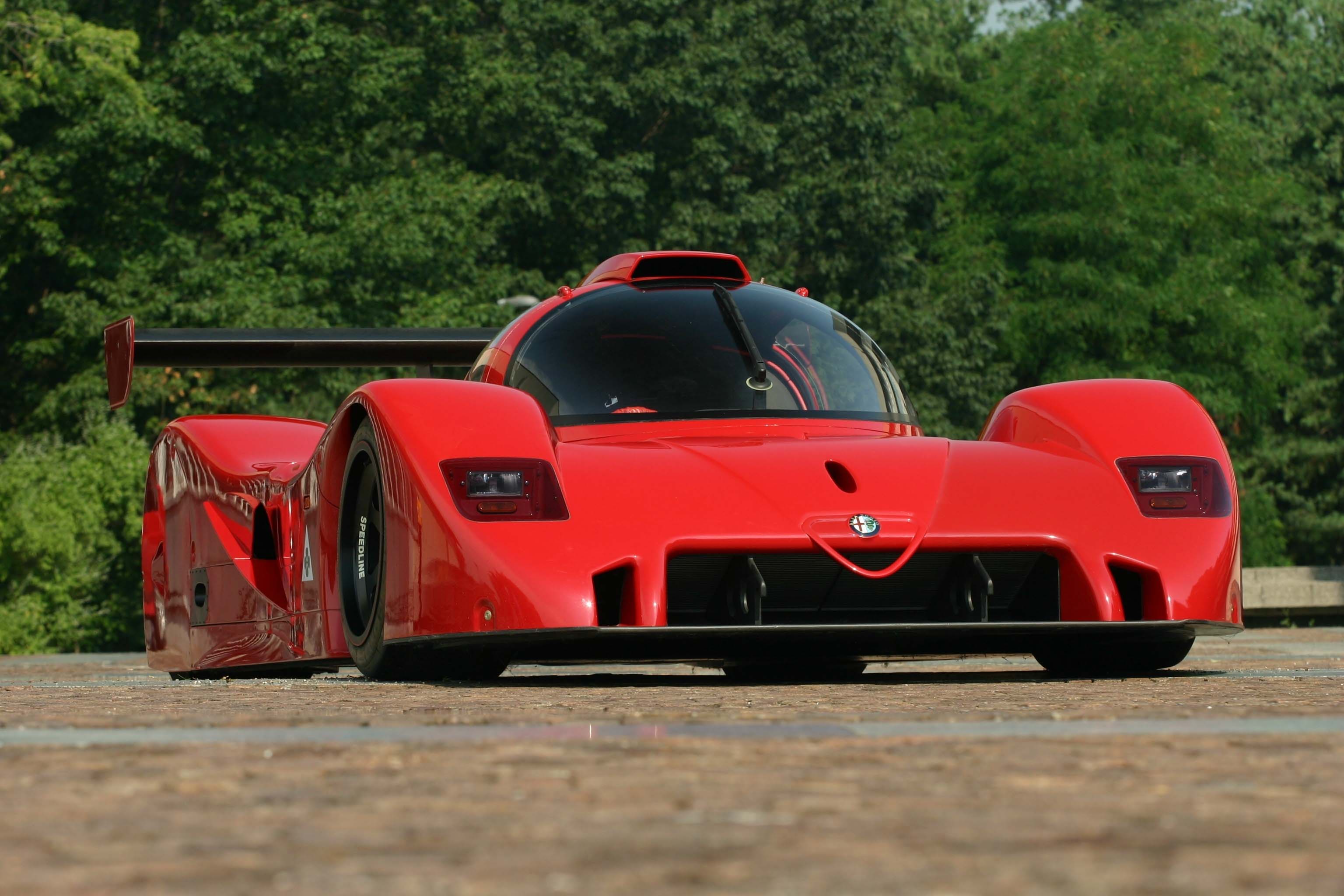
.jpg)
